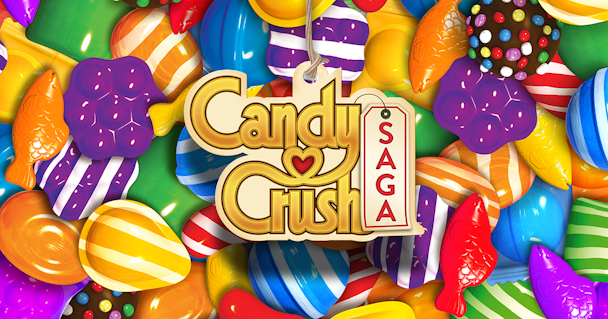How Candy Crush is keeping the brand appetizing in its second decade
Candy Crush, one of the most successful gaming franchises of all time, helped redefine the mobile space. As the game celebrates its 10th anniversary, The Drum questions King and Activision Blizzard about the saga’s next decade.

As Candy Crush celebrates its first decade, the team behind it eye the future of mobile games and marketing / King/Activision Blizzard
When quizzed on the longevity of the series, the unexpected answer is narrative. While many Candy Crush players open the app for a quick fix, at King’s headquarters in Stockholm the narrative and design teams work to create a context for all those puzzling. Working alongside the audio and level design team, the brand is preparing for a mobile gaming ecosystem that’s seeing real change.
Jonathan Stringfield, vice-president of global business research and marketing at King owner Activision Blizzard, explains that the mobile gaming ecosystem in 2022 has parity with other parts of gaming in terms of engagement and community. “Diablo Immortal is an example where it was previously a very specifically PC-based franchise, but now anyone can play on mobile.
“Things like consoles and big powerful PCs and whatnot, that’s going to continue to become less important. Candidly, that’s good for the gaming industry on the whole, because, in general, what we’ll see is that it just creates more surface area for folks to be able to interact with these games.”
Advertisement
Todd Green is general manager of Candy Crush. He believes that the longevity of the title can be chalked up to the constant updates. While the core experience changes iteratively, with the introduction of new levels and icons, there’s a consistent sense of novelty for the players. A huge amount of effort goes into keeping the candy fresh.
Green says these updates have kept the community strong, and specifically cites some of the fan-run Wikis as being proof points for the scale of engagement that users have with the game. Those gaming communities, which have existed around King’s properties since it was building games for Facebook, are part and parcel of why advertisers are attracted to mobile titles. That and the fact the organization was the first gaming organization to sign up to the IAB UK’s Gold Standard.
Beyond advertising, Candy Crush is also demonstrating that brands can get involved with games beyond just sticking a video ad between levels. The King team went out of its way, for example, to form a meticulous explanation for why Sonic the Hedgehog would appear in its world, for example.
Sweet celebrations
For the 10th anniversary, Candy Crush is celebrating within and without the app itself. A refresh of the music – for the first time in 10 years – involved a live orchestra recording new arrangements at Abbey Road Studios in London, while the characters within the app are now more animated than before.
Meanwhile, a number of activities outside the game aim to introduce the anniversary changes to a wider audience, including a drone show over New York City.
Stringfield argues that, while publishers and developers should aim for parity in terms of quality respective to platform, the gaming ecosystem is wide enough to allow for a wide array of monetization methods. “Activision Blizzard, among many other game companies, wants the entire world to be playing our games. And for that to be possible, we need to be really flexible in terms of how we transact with customers. Some of them are going to be very happy to pay upfront for a certain experience, cool. Some of them want a free game where they just buy some stuff as they go on... also cool.
“What we’re seeing is that these apparatus are going to get built, both with respect to the complexity of the economics of the game industry, but also as a reflection of [trying] to be as wide as possible.”
To that end, King’s president Tjodolf Sommestad acknowledges that the company is “always looking” at the advent of new tech such as virtual reality (VR) and augmented reality (AR), which could potentially upend the industry as thoroughly as mobile platforms once did. It was, he notes, King’s early transition from Facebook to mobile that ultimately led to King’s success in the space.
However, he also notes that King is first and foremost a mobile gaming company. The scale of advertising spend in the space goes some way to explaining that – but that is all predicated on the engagement that users have with the games themselves. All the behind-the-scenes work on updates that might seem minor – such as updating an icon for licorice – end up refreshing the experience in totality.
For Stringfield, that is why the marketing industry and media buyers should be paying more attention to gaming. He explains: “I’m sympathetic to the plight of the marketing community, or honestly any business community outside of gaming, because gaming historically has been a cloistered industry.
“Now, again, to be clear, there are a lot of missed opportunities there. Because some of the biggest technical innovations that we’re doing now are founded in gaming, including things like digital distribution of content.”
So as Candy Crush turns 10, those behind the game are keeping their eyes open for the new opportunities that will arise around gaming in all its forms. In another decade, the space will have changed significantly, but the fundamentals around keeping players engaged and interacting will remain the same.

